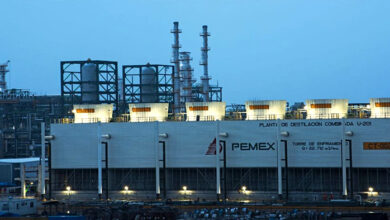Low-cost gas requires underground storage.

ISLAMABAD: An underground gas storage (UGS) project on the depleted Khorewah-1 gas deposit in Badin district is viable for providing low-cost gas year-round, an ADB assessment found.
The feasibility analysis was done by a Danish consulting business with German and Pakistani partners under a July 2019 agreement between Pakistan and the ADB.
The research suggested a debt-to-equity ratio of 80:20 for project financing. The Khorewah project will cost $1,388.82 million, and it is expected that both the public and private sectors will be involved.
Khorewah’s 70 BCF storage capacity is adjustable based on market demand and supply. Khorewah lies in the Lower Goru Formation sandstones.
The ADB study recommended importing gas through the Turkmenistan–Afghanistan–Pakistan–India (TAPI) Pipeline and Iran-Pakistan (IP) Gas Pipeline and transporting it via the Sui Southern Gas Company’s pipeline. At first, a “cushion” of gas would be kept in the storage as a permanent stock to support the operations of underground gas storage.
To satisfy expanding energy demands, Pakistan is implementing gas import projects like TAPI, OGPP, etc. Pakistan’s energy needs are partially fulfilled by importing liquefied natural gas (LNG).
The final report of the economic feasibility study says that the Khorewah project hasn’t had any bad effects on the environment during construction and won’t have any when it’s running.
The Pakistani government was concerned about the lack of an underground gas facility because the Khorewah Mining Lease is still valid and producing till 2024. still producing at modest rates. 2020 will be rate-free.
Working gas is gas above cushion gas, according to the paper. Injection capacity is the daily gas injection rate. Gas storage facilities have a withdrawal capacity.
The paper claims LNG storage capacity could give some gas to the south during the winter, while UGS storage will predominantly feed the north. During times of high demand, the gas doesn’t have to be re-gasified, sent to the northeast, and then sent back to the south. Instead, it can be taken straight from the LNG storage facility.
The paper calls for building storage facilities near existing LNG infrastructure and the upcoming North-South Gas Pipeline tie-in, as well as a UGS in Khorewah, to increase the amount of gas that can be used.





